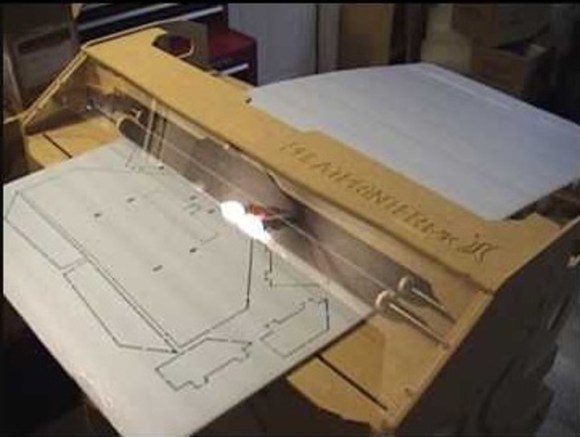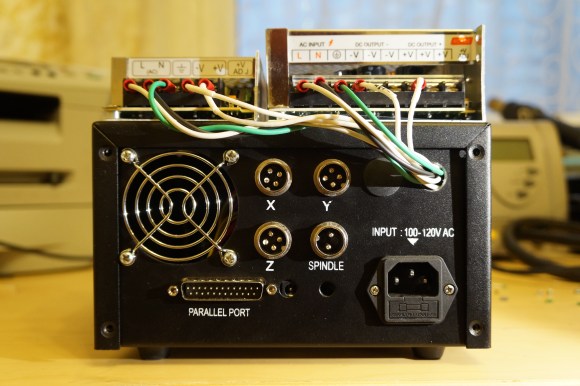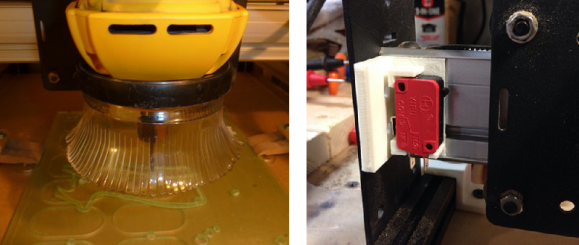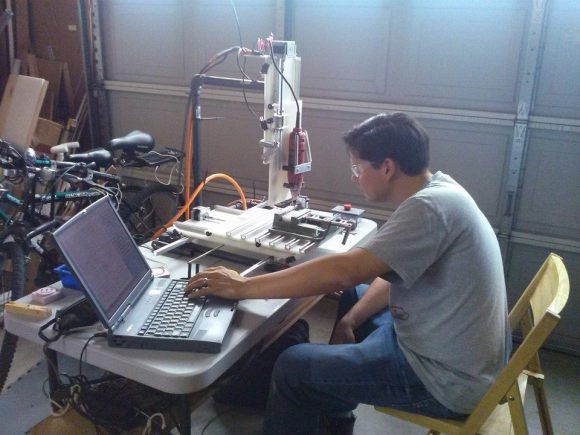
Cost is always a drawback and a hurdle when buying or building a CNC Machine, especially when building it just for fun or hobby. [Eric] was able to cobble together a working 3-axis rotary tool based machine for about $250, a few trips to the hardware store and a bunch of time.
The machine design is loosely based on this one he found on Instructables. [Eric] chose this style because he felt the boom supported tool would have been more stable and easier to build than a gantry style machine. Skate bearings, HDPE sliders and c-channel aluminum were used to support the XY table instead of traditional linear bearings and rails. All three axes are driven with stepper motors and 1/4″-20 threaded rods. The Harbor Freight dremel-style rotary tool helps keep the overall cost down.
Continue reading “$250; Pushing The Limit On Cheap (And Functional) CNC Machine Builds”

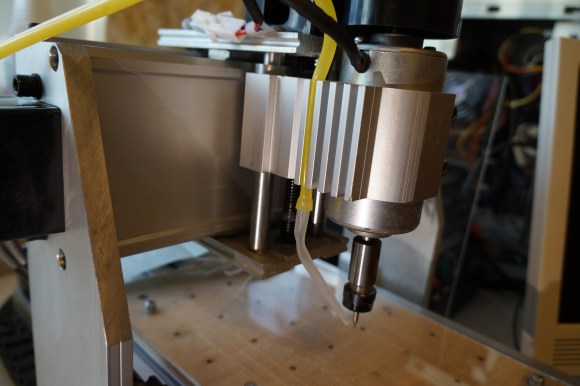
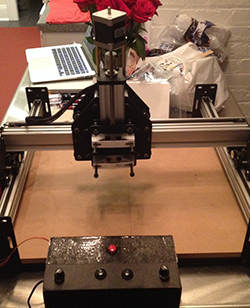 CNC machines have been around for decades, but only recently have small desktop routers, 3D printers, and laser cutters brought G code to the tabletop. Obviously, this is a teaching opportunity, and if you’re trying to get kids interested in the inner workings of machines that build things, you can’t begin with obtuse codes understood only by machines and CNC operators.
CNC machines have been around for decades, but only recently have small desktop routers, 3D printers, and laser cutters brought G code to the tabletop. Obviously, this is a teaching opportunity, and if you’re trying to get kids interested in the inner workings of machines that build things, you can’t begin with obtuse codes understood only by machines and CNC operators.